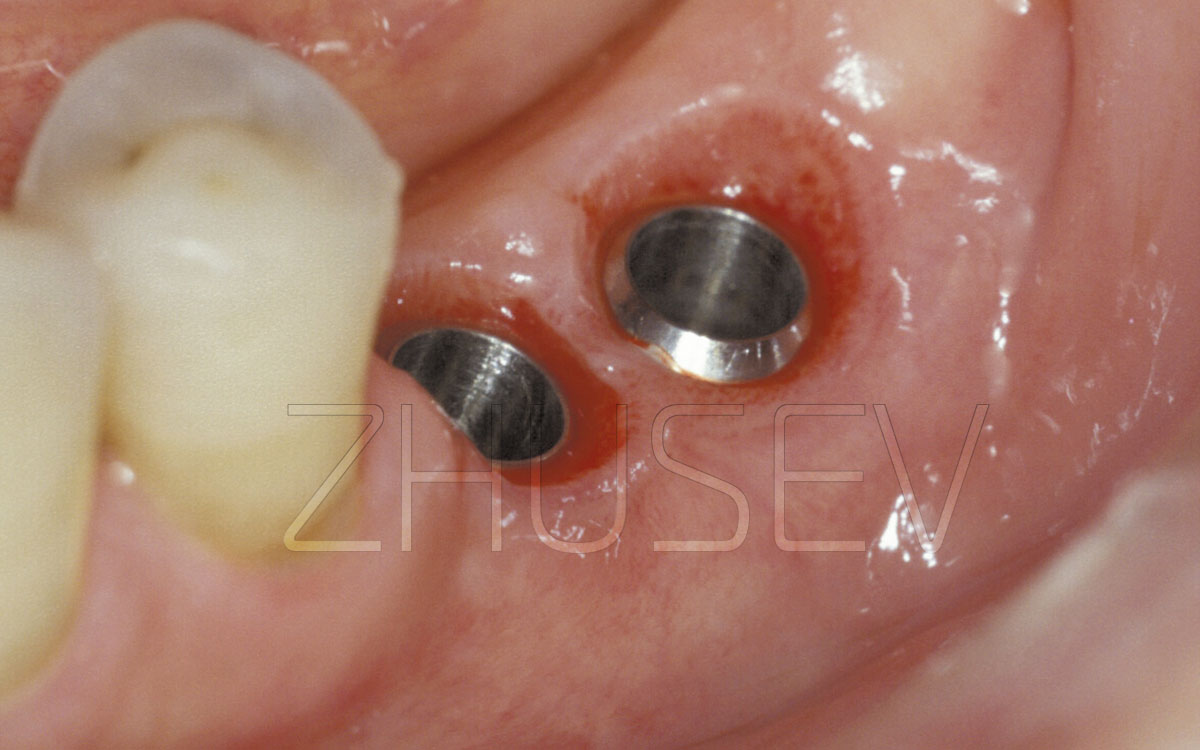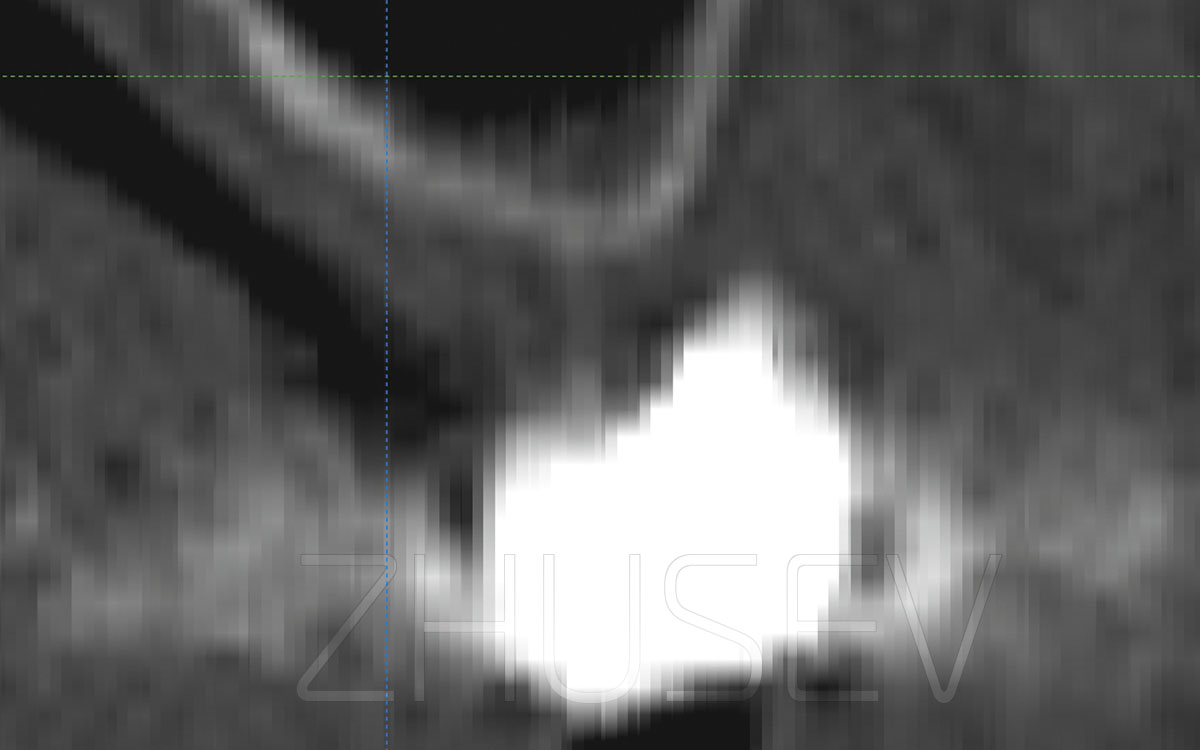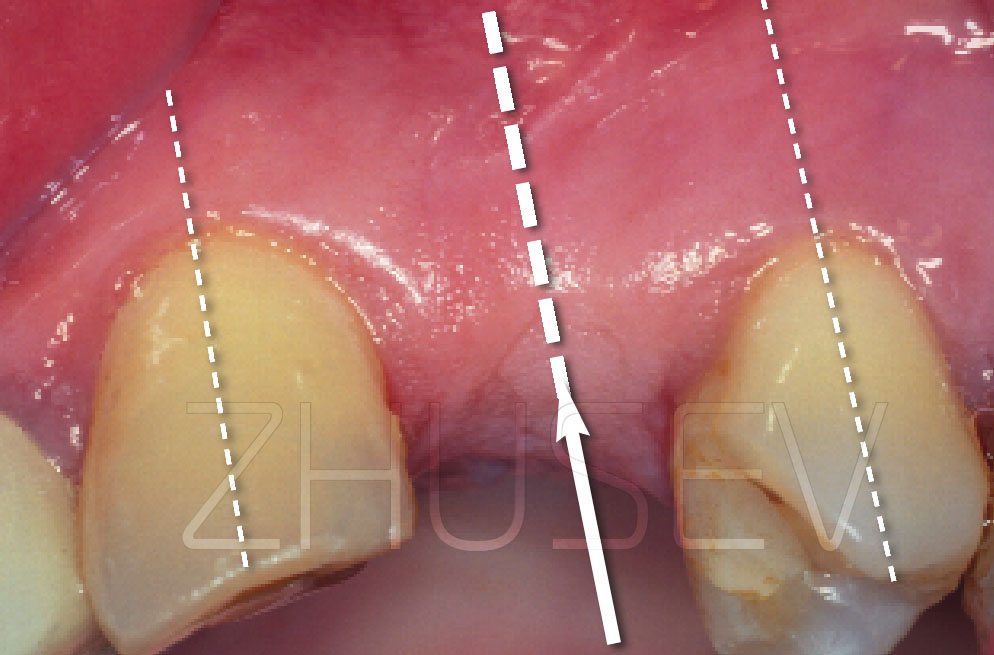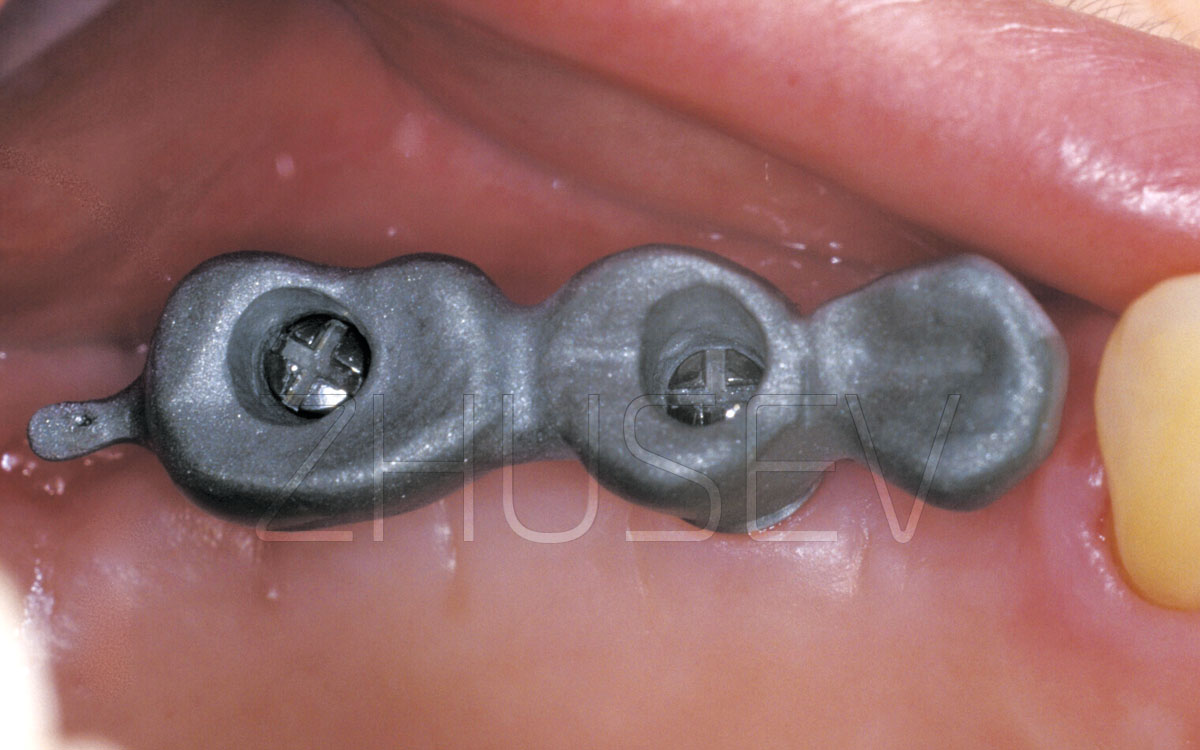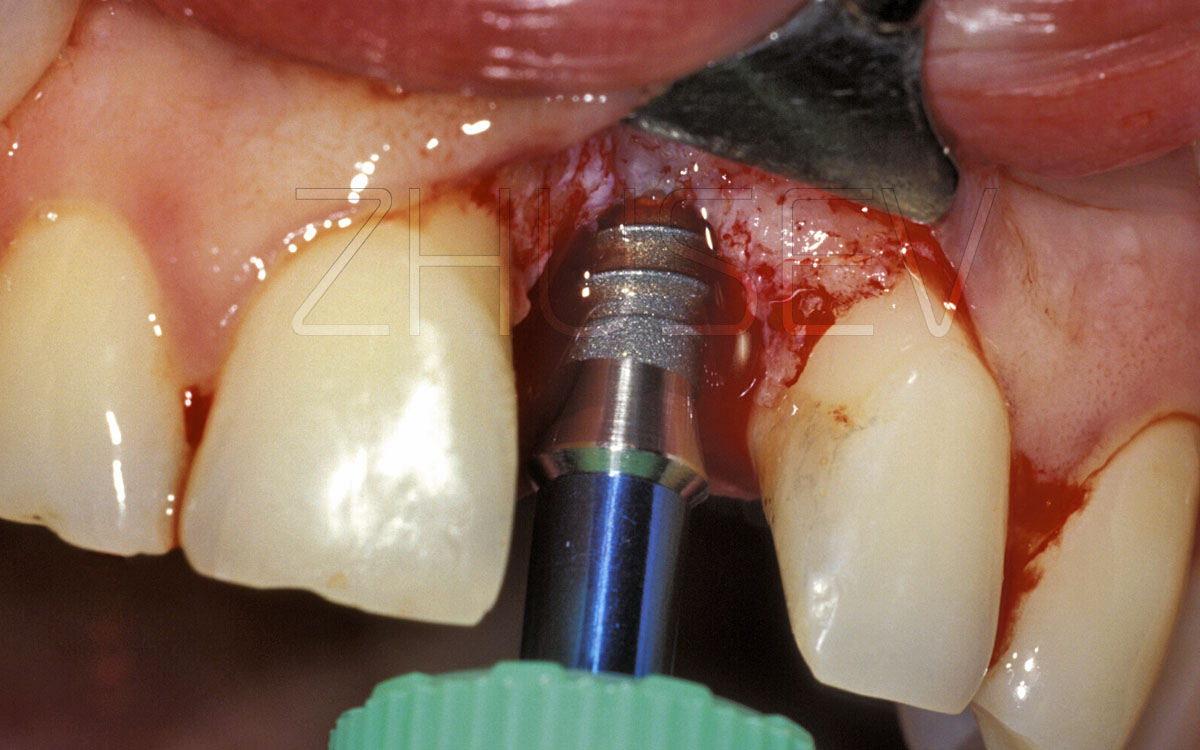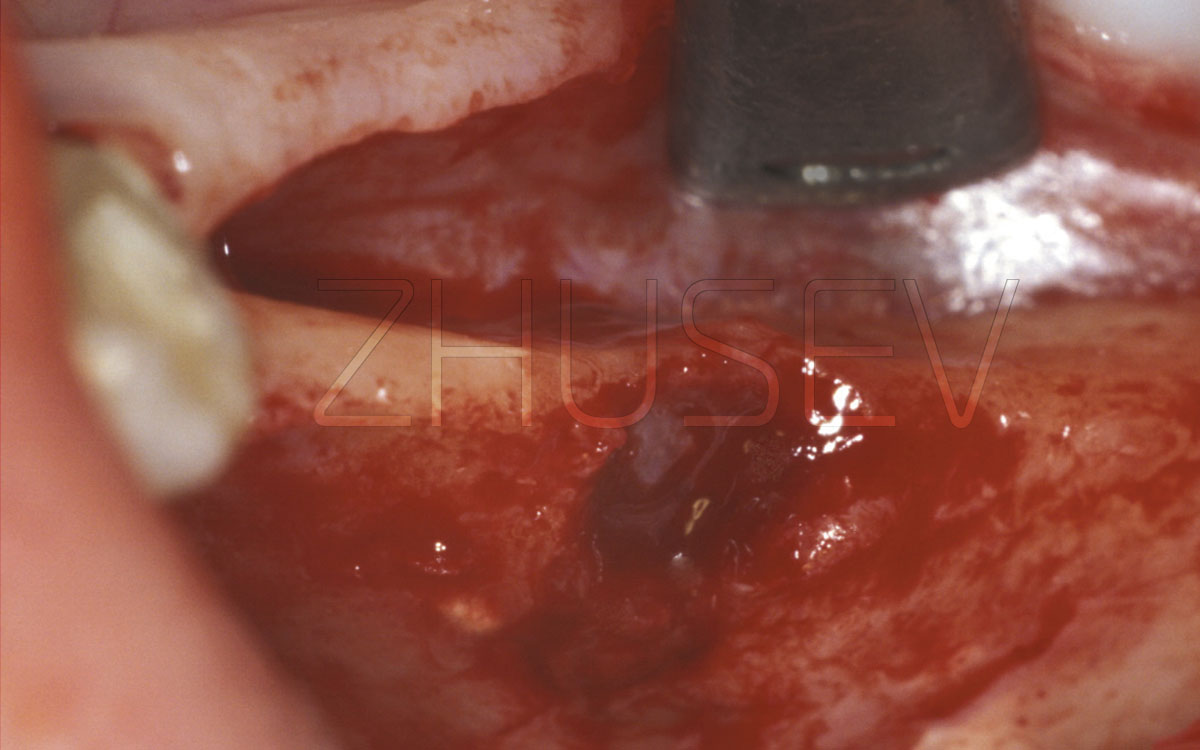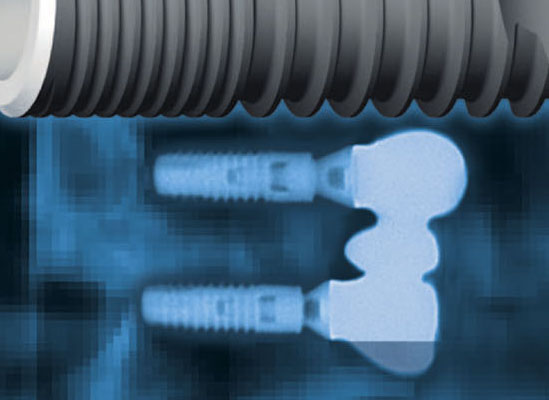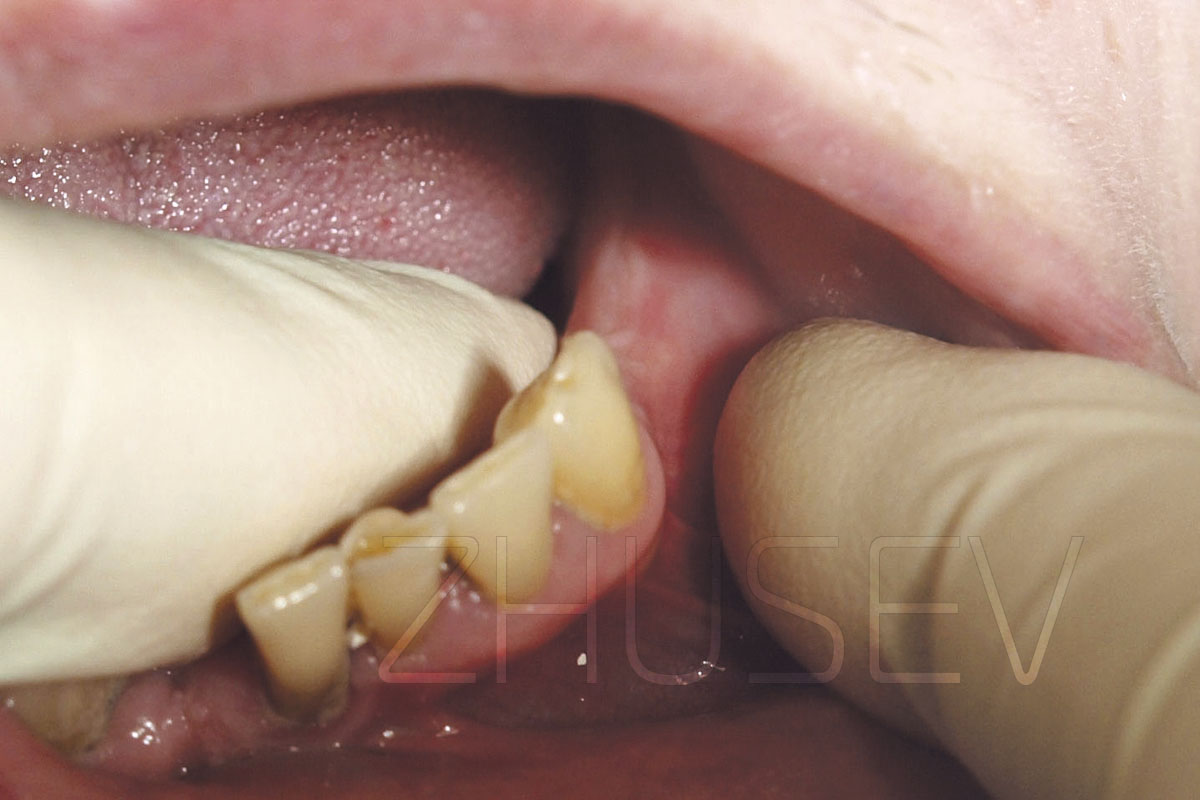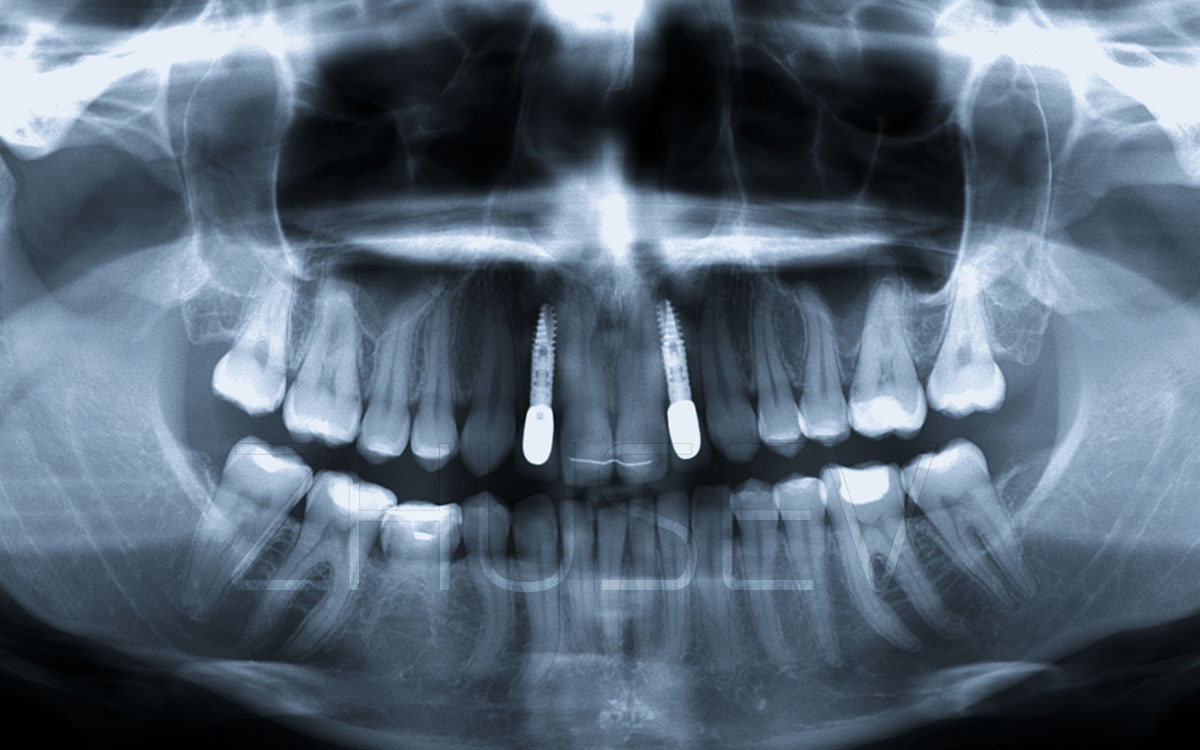It is strongly recommended that on the eve of surgery or on the day of surgery the patient should abstain from taking alcohol and strong coffee. It is advisable that coming in for surgery, the patient should not wear wool or down garments or turtleneck sweaters, which may cause respiratory problems. Ladies should be asked to come in for surgery without their makeup on.
On the morning of their surgical procedure, the patient should have breakfast according to their eating habits (they should avoid overeating or starving). If you plan to insert several implants, use a membrane or withdraw bone tissue, or if the patient’s oral hygiene leaves much to be desired, prophylactic antibiotics (amoxiclav1250 mg, for instance) must be administered 30 – 40 minutes preoperatively and amoxiclav 875 mg twice daily for 3 – 5 days after surgery. Coming in for surgery, the patient should bring their toothbrush and toothpaste (it is recommended that you should assess the overall state of toothbrush deterioration and once again discuss oral hygiene with your patient).
Immediately before the surgical procedure, the patient must thoroughly brush their teeth and rinse their oral cavity with a weak disinfecting or antiseptic solution. The patient must also be instructed to sign the Informed consent for surgery and other required documents. It is advisable that the patient should be acquainted with the documents beforehand, for instance during the initial consultation.
Once the documents are signed, remember to ask your patient whether they have some questions concerning the anticipated surgical procedure and answer them. Let your nurse or assistant prepare the operating table and physiodispenser.
Remember to warn your patient that the cost of subsequent prosthetic procedures is not included into the cost of implant surgery. Many patients believe that an implant serves as the replacement for an entire tooth rather than its root.

